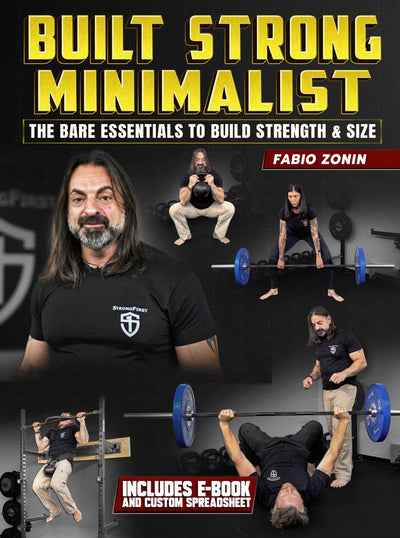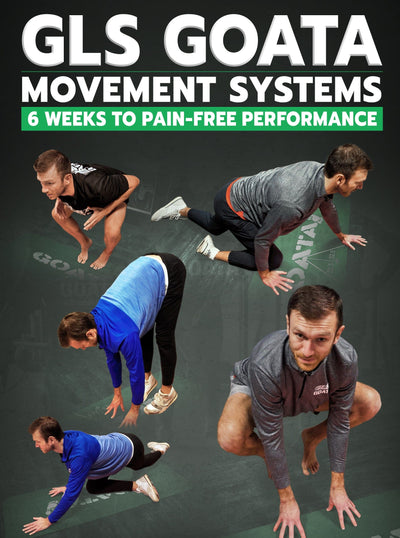Kettlebell Clean and Jerk Muscles Worked
In the realm of functional fitness and strength training, the kettlebell has gained immense popularity for its ability to deliver a full-body workout. One standout exercise that showcases the versatility and efficacy of this simple yet powerful tool is the kettlebell clean and jerk. Combining elements of explosive power, stability, and coordination, the clean and jerk is a dynamic movement that engages multiple muscle groups, making it an excellent addition to any fitness routine. In this article, we will explore the mechanics of the kettlebell clean and jerk and delve into the specific muscles it targets.
What this article covers:
The Kettlebell Clean and Jerk
The kettlebell clean and jerk works muscles all over the body. It is a compound exercise that involves two distinct movements: the clean and the jerk. The clean brings the kettlebell from the floor to the rack position, while the jerk propels the weight overhead. This explosive exercise requires proper technique and coordination to maximize its benefits and minimize the risk of injury.
Muscles Engaged:
Quadriceps: The clean and jerk starts with a powerful leg drive, engaging the quadriceps (front of the thigh) to extend the knee and generate upward momentum.
Hamstrings: As you initiate the clean, the hamstrings (back of the thigh) are activated to help with hip extension and propel the kettlebell upward.
Glutes: Both the gluteus maximus and gluteus medius contribute to the upward thrust during the clean and provide stability during the jerk phase.
Core:
Abdominals: The kettlebell clean and jerk demands a strong core to maintain stability and transfer power. The rectus abdominis (six-pack muscles) and the deeper transverse abdominis activate to provide trunk stability throughout the movement.
Obliques: The oblique muscles, located on the sides of the abdomen, assist in stabilizing the torso during the clean and jerk.
Upper Body:
Trapezius: The trapezius muscles in the upper back are engaged during the initial clean movement to shrug the shoulders and create momentum.
Deltoids: The clean and jerk involves the deltoid muscles, particularly the anterior (front) and lateral (side) heads, during the lifting phase and to stabilize the weight overhead.
Rhomboids: These muscles, located between the shoulder blades, activate to retract the scapulae and maintain upper back stability throughout the exercise.
Biceps and Triceps: Both the biceps and triceps play a role in the kettlebell clean and jerk. The biceps are engaged during the clean as you bring the kettlebell toward the body, while the triceps are involved in extending the elbow during the jerk phase.
Forearms:
The forearms, including the wrist flexors and extensors, are heavily involved in gripping and controlling the kettlebell throughout the clean and jerk movement.
Kettlebell Clean and Jerk
The kettlebell clean and jerk is a compound exercise that combines two distinct movements: the clean and the jerk. The clean involves lifting the kettlebell from the floor to the rack position, while the jerk propels the weight overhead. The clean portion requires a powerful leg drive and hip extension to bring the kettlebell to the shoulder, while the jerk involves a forceful press with the arms and legs to drive the weight overhead. The clean and jerk is an explosive, full-body movement that challenges strength, power, and coordination.
Kettlebell Jerk
The kettlebell jerk is the second part of the clean and jerk exercise. It focuses on the overhead portion of the movement, where the kettlebell is driven from the rack position to an overhead position. The jerk requires a strong leg drive, a rapid dip and drive of the hips, and a forceful press with the arms to propel the kettlebell overhead. It is a dynamic and powerful movement that primarily targets the shoulders, triceps, and core. The kettlebell jerk allows for heavier loads to be lifted compared to other kettlebell exercises due to the assistance of the lower body.
Kettlebell Push Jerk
The kettlebell push jerk is a variation of the jerk movement that emphasizes the upper body pressing strength while still incorporating the leg drive and explosive hip extension. In the push jerk, the legs initiate the movement by quickly extending and driving the kettlebell upward, and then the arms finish the movement by pressing the weight overhead. This variation places a greater emphasis on the shoulders, triceps, and deltoids, as the legs provide less assistance compared to the traditional jerk. The push jerk is a valuable exercise for developing shoulder stability, upper body strength, and power transfer from the lower body to the upper body.
By including the kettlebell jerk and kettlebell push jerk in your training routine, you can further diversify your movements and challenge your muscles in different ways. These variations allow you to target specific muscle groups while enhancing your overall strength, power, and coordination. Experimenting with these exercises can provide a fresh stimulus to your workouts and help you achieve your fitness goals more effectively.
The kettlebell clean and jerk is a dynamic and demanding exercise that targets multiple muscle groups, making it a fantastic choice for developing strength, power, and overall athleticism. By incorporating this compound movement into your training routine, you can effectively engage your lower body, core, upper body, and forearms. Remember, proper form and technique are essential to reap the full benefits of this exercise and minimize the risk of injury. Always start with lighter weights and gradually increase the load as your strength and proficiency improve. So, grab a kettlebell, master the clean and jerk, and unlock a world of strength and power!
Did you find the blog helpful? If so, consider checking out other guides:
- Kettlebell Lateral Lunge
- Kettlebell Curtsy Lunge
- Kettlebell Overhead Lunge
- Kettlebell Goblet Walking Lunge
- Kettlebell Squat Thrust
- Kettlebell Thrust
- Banded Kettlebell Hip Thrust
- Double Kettlebell Snatch
- The Kettlebell Half Snatch
- Kettlebell Clean and Snatch
- Renegade Rows with Kettlebells
- Kettlebell Gorilla Rows
- The Kettlebell Ballistic Row
- Bent Over Kettlebell Row
- Kettlebell Lower Back





